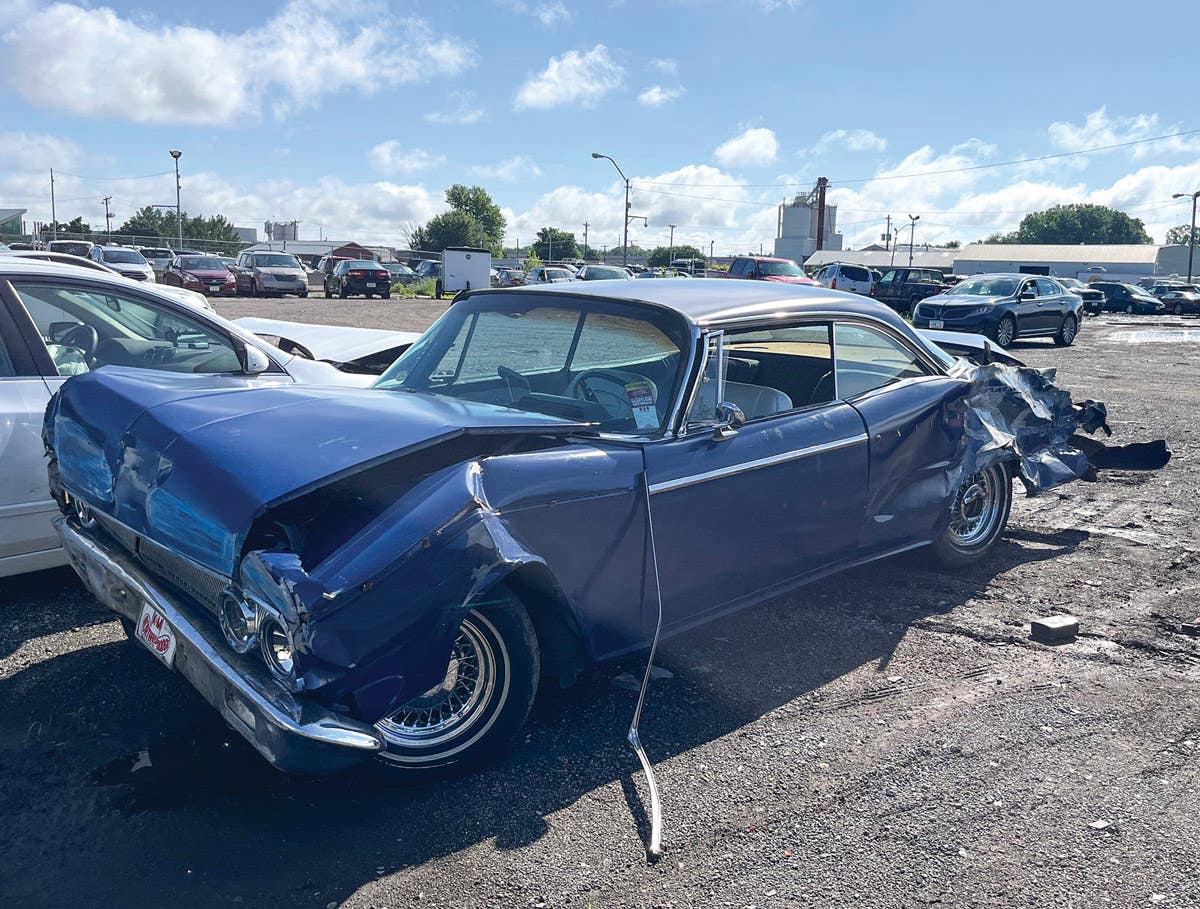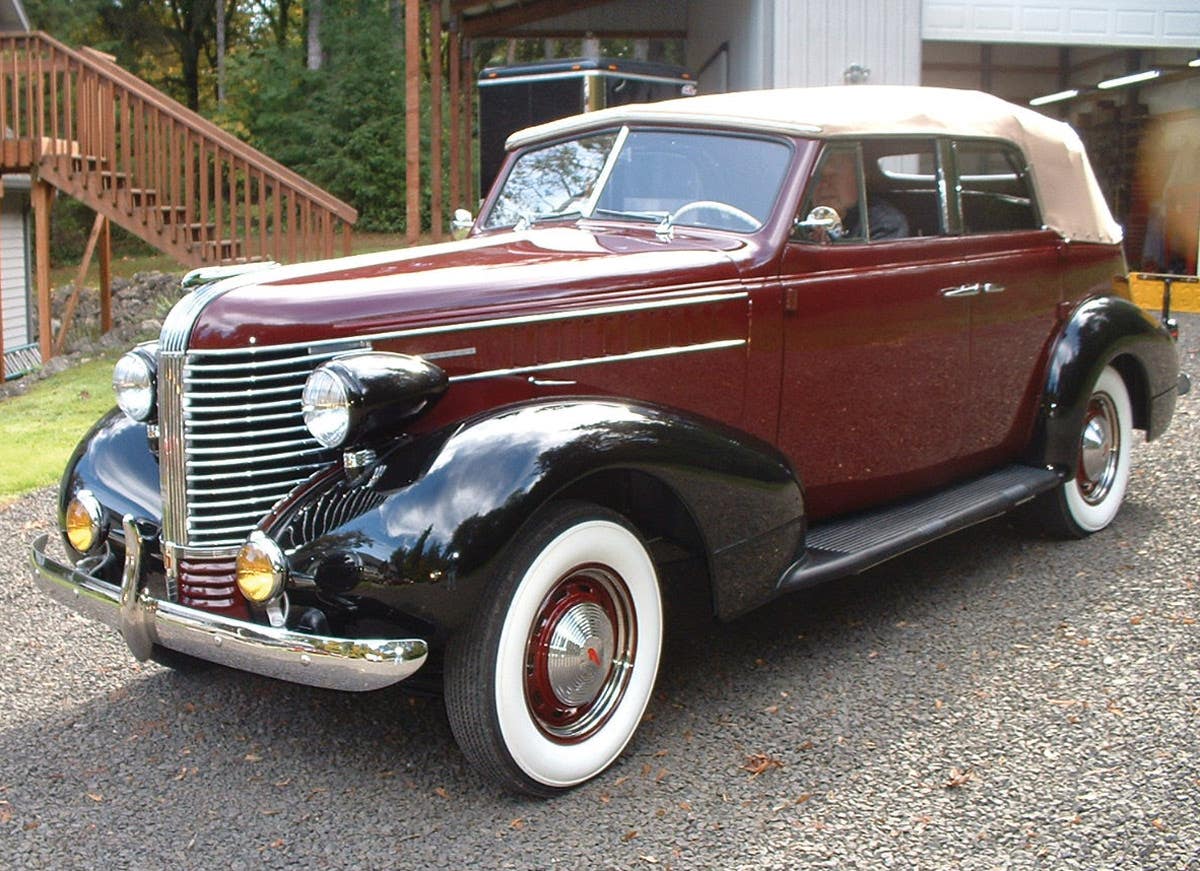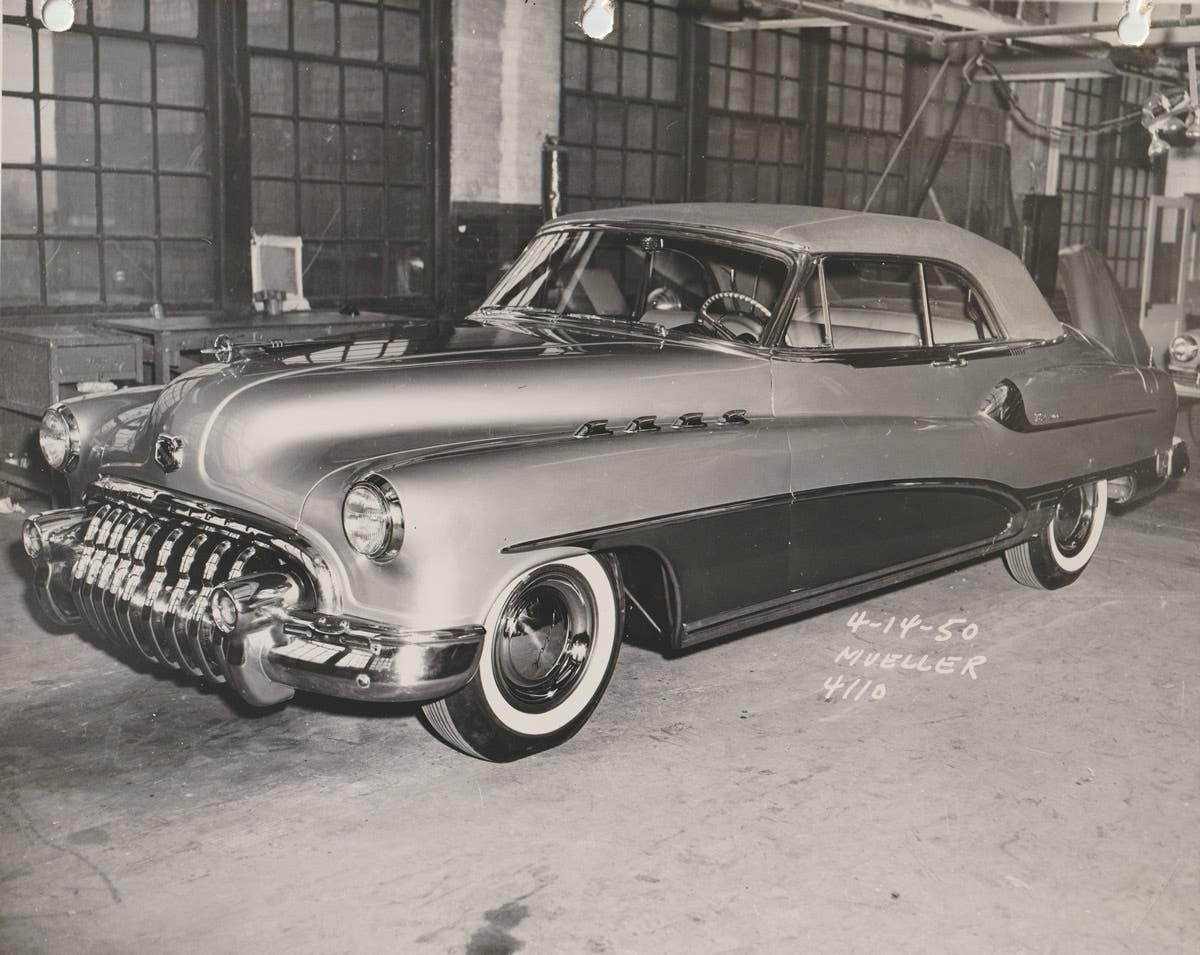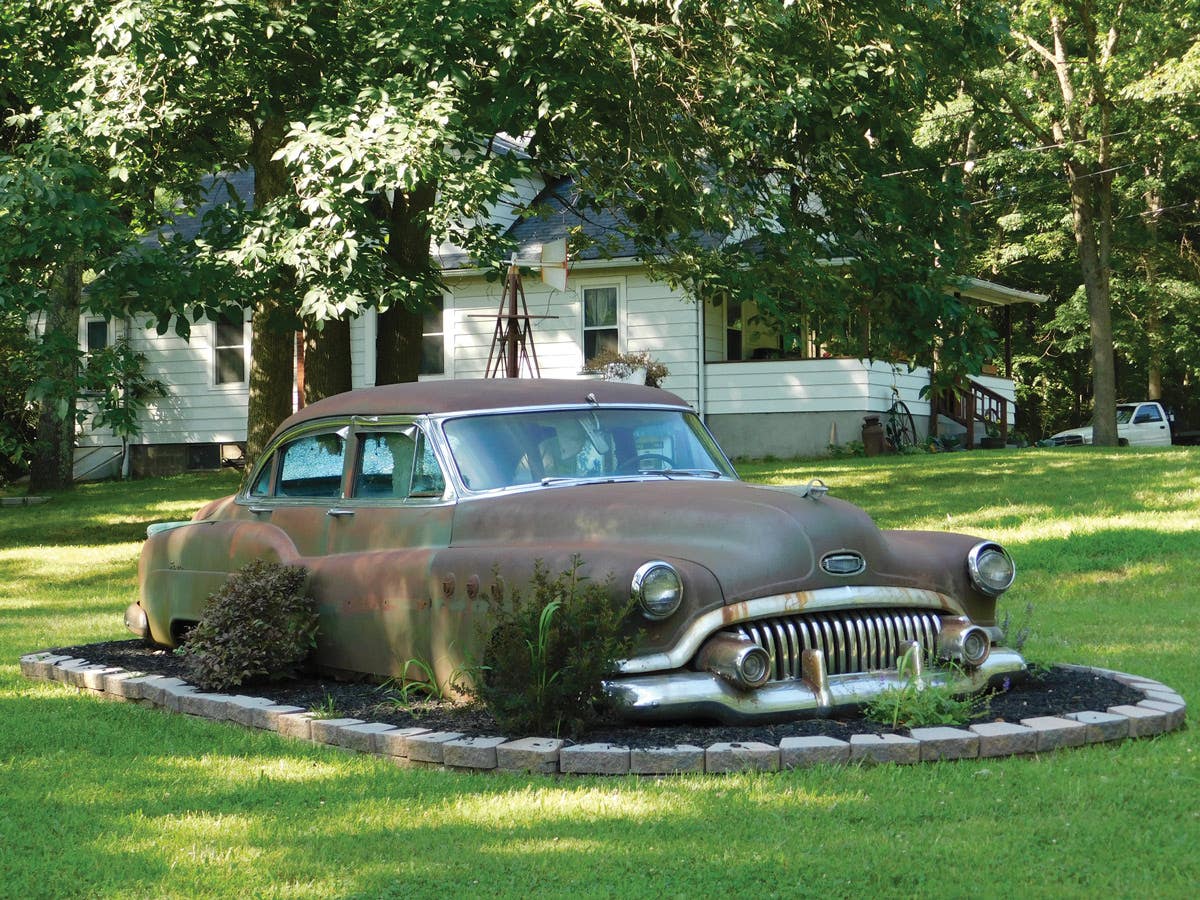A 1949 Kaiser sedan. From the front, it was impossible to tell if
the car was a hatchback.
Kaiser-Frazer Corp. started as an auto maker in the boom years of the late 1940s. America was car-starved after the World War II years when no new cars had been built. Henry Kaiser was a hugely successful West Coast ship builder, and steel, aluminum and cement maker. Joe Frazer was an experienced automobile manufacturing executive who knew the auto industry. Together, they formed Kaiser-Frazer Corp. and set out to become a major U.S. car builder.
For a time, they succeeded. Starting from scratch, they designed a car, acquired the huge Willow Run war surplus plant near Detroit, and began full production by 1947. By the end of the 1948 model year, Kaiser-Frazer had produced almost 300,000 new cars and ranked eighth in the U.S. auto industry! But this good news was not to last.
For the 1949 model year, Frazer, with his marketing experience in the industry, knew that K-F would be up against brand-new designs from the “Big Three.” Up until then, GM, Ford and Chrysler had been selling warmed-over prewar designs that dated back to 1941 and ’42. Kaiser-Frazer planned a redesigned car for 1950 or ’51, but for 1949, the original Kaisers and Frazers would have to be face-lifted and jazzed up. Frazer knew that the company’s products would be a tougher sell with the new product competition and the sellers’ market winding down. He tried to budget for much lower production, but Kaiser wouldn’t hear of cutting back. He insisted on maintaining high production rates and trying to force dealers to sell them.
Kaisers and Frazers were essentially the same car. The Frazer was the deluxe, better-trimmed and higher-priced version. In 1947 and ’48, the only body type K-F offered was a four-door sedan. The company offered no coupes, two-doors, convertibles, wagons or any other body styles. There wouldn’t be any two-door body styles until the new body design arrived in 1951. So for ’49, K-F designers did their best to come up with variations on the four-door sedan. Our “Motor City Milestone” subject is the most successful and innovative idea that resulted: the Kaiser Traveler and Vagabond.
As part of the 1949 Kaiser lineup, Kaiser introduced the first American hatchback body style. It is fitting that the idea came from Kaiser himself. Tired of wrestling with seats in his wood station wagon that had to be unbolted and physically removed from the car, and tired of the squeaks, rattles and general truck-like feeling of his woodie, he conceived the idea of installing a rear hatch and drop-down tailgate in a regular Kaiser sedan. He called his son Edgar, who was K-F general manager, back to California from Michigan and told him to get busy with the hatchback idea. Edgar and his K-F designers did so, and the result was the Kaiser Traveler and Kaiser Vagabond — truly milestone car designs.
Designers made a cut around the Kaiser rear window extending down to the trunk lid. The lower part of the deck lid was then hinged at the bottom and unfolded to be a tailgate like a station wagon. The upper part of the trunk lid and the rear window area were combined into a lift-up hatch hinged at the top. The result was an opening at least equal in size to the station wagons of the day.
The other major challenge was to redesign the rear seat so that it could be easily folded to become part of the cargo deck. It no longer had to be removed from the car when loads were hauled. Although Packard had pioneered the folding rear seat in its 1948 Station Sedan, other wagons would not pick up on the idea until the 1949 or 1950 models. Kaiser was one of the first to put the idea into production.
The base model was named the Traveler and an upscale version, with leather trim available, was named Vagabond. Heavy-duty springs and shocks were fitted. The spare tire had to be relocated. Tires were not nearly as reliable in 1949, and a spare was essential. The Kaiser sedans stored the spare vertically against the back seat, but this was right in the middle of the load area. The only place that could be found was to hang the tire on the inside of the left rear door and weld the door shut. A flat-load floor was designed with wood rub rails to make it easy to slide in loads.
The resulting car made an attractive and useful new package. From the front, it looked like a normal Kaiser sedan, yet with the hatch/tailgate open, it could swallow a large load on a moment’s notice. The public liked it, too. For the 1949 Kaiser production run, the Traveler/Vagabonds accounted for 1/4 of Kaiser production — not bad for a brand-new concept. Traveler production reached almost 20,000 (sources differ slightly) and the more posh Vagabond accounted for about another 4,500 cars.
But these cars were the only bright spot in what was a disastrous sales year for Kaiser and Frazer. The worst fears of Frazer came true. Kaiser ran the production line well ahead of what dealers could sell. As a result, there were so many cars left over at the end of the 1949 model year that the leftovers were renumbered and sold as 1950 models. Even at that, there were still unsold cars left when the 1951 Kaisers and Frazers went on sale.
The Kaiser was entirely redesigned for 1951. (See “Motor City Milestone” No. 55, Old Cars Weekly Aug. 7, 2008). The Traveler hatchback body style continued to be available in both two-door and four-door form in the new body. The redesigned body provided a better location for the spare tire: under the floor. But sales never amounted to much, largely because Kaiser sales generally were shrinking by the year. 1955 was the last year Kaisers were built in the U.S., although production continued in Argentina for several years thereafter.
CLICK HERE to tell us what you think in the Old Cars Weekly forums







